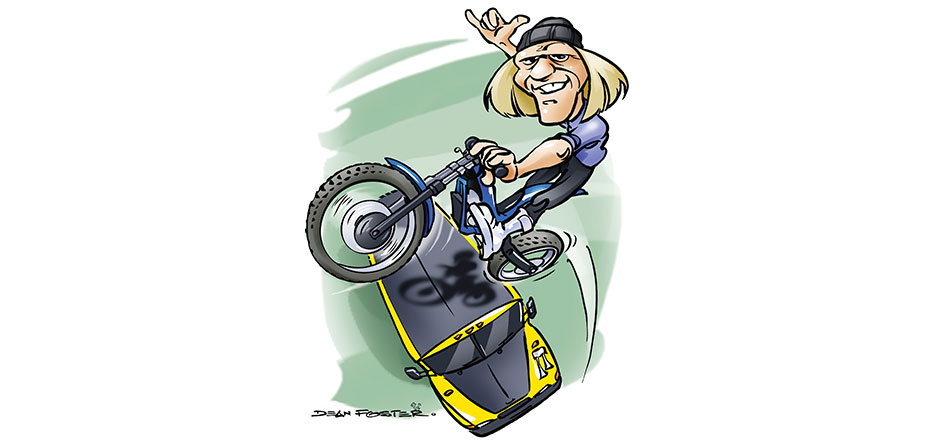I’ve been drawn to adventure bikes over the years, shifting from dirt bikes to big ADV touring machines because of the latter’s versatility on- and off-road. This past summer, I began to realize I might be missing out on what had initially hooked me on the sport of motorcycling. I had been riding my 450 street-legal dirt bike and became comfortable with the idea that I couldn’t push myself too much because my dirt bike was just too big. I became complacent in my riding skills and pushed aside my thirst to challenge and improve my skills.
We get comfortable with our bikes and the terrain that we can comfortably handle during a short or long trip. Falling into a rut is easy, as is thinking that you’re “good enough.” I certainly thought that until I threw a leg over a trials bike this past summer.
I had ridden trials before, but in brief stints without any real direction. I grew up riding dirt bikes, then swapped to ADV machines. I thought I had enough skill to achieve what I wanted in the riding realm. I realized quickly once on a trials bike that I need to put in more hours to up my riding game.
I put my ego aside and took a trials clinic put on by Sam King. Getting schooled was the most humbling and inspiring thing that I could do to remind myself how much I still have to learn. Sam is an Australian-born trials rider who moved to Canada a few years back. He offers clinics across Canada for beginners and experienced riders, along with his “Ride the Vibe” trials shows.
When I arrived at the clinic, I realized that I probably was the least experienced rider there except for one other rider who had just recently learned to ride a dirt bike – and I wasn’t wrong. We worked on fundamental trials skills, and I quickly saw direct correlations among technical ADV, dirt and trials riding.
Sam spoke about many techniques and lessons similar to the ones I have used while teaching dirt biking, but his emphasis was on slow and controlled movements and methodically moving your body in co-ordination with the clutch, throttle and brake. Without a seat on a trials bike, you have to stand and learn to focus heavily on body separation from the bike and peg weighting; you quickly learn what a difference these skills can make in your overall riding.
They say that to become a great rider on the road, you must have some experience riding on dirt. In doing so, you gain confidence in emergency braking, learn how to handle varied terrain and loss of traction, and improve your reaction time while observing your surroundings. But to become an exceptional rider on- and off-road, I now believe taking up trials riding is key.
Take Canadian rider Jordan Szoke, for example. He began his road-racing career at the age of 15 and has won 23 National racing championships throughout his 24-year career, as well as riding and winning national observed trials championships on multiple occasions. He isn’t a one-off outlier; many top road-racing riders also take up trials in their spare time. Is mixing trials with another discipline of motorcycling the magic formula to create the optimal rider?
Trials emphasizes the fundamental balance and movements needed to get over obstacles, along with non-stop clutch control. The key in trials is to assess your line and understand each movement and moment in order to achieve your line. Then approach your line with understanding, and methodically try to follow through with your co-ordination to get through each feature without putting a foot down.
Almost more important than the riding skill is training your brain to observe the terrain ahead of you using a puzzle-solving mindset. In trials, you look at challenges in small segments, breaking down each feature before looking at it all at once. You take apart your line and break down what you need to do to get yourself and your bike to the other side of the feature in front of you.
Throughout the day at the trials course, I realized that although I’m a good rider, there are obstacles that I approached knowing I can make it over just with a blip of my throttle on my dirt bike. Now, I reconsider these features and think about how I can bring my trials skills into play to ride more efficiently and with more skill.
We speak often to the benefits of taking a motorcycle course. Whether it’s on or off the street, remember you can always improve your riding. In the end, we want to keep our bikes and ourselves safe. By honing in on a new form of motorcycling, you can improve your overall skills and become a more proficient rider.










